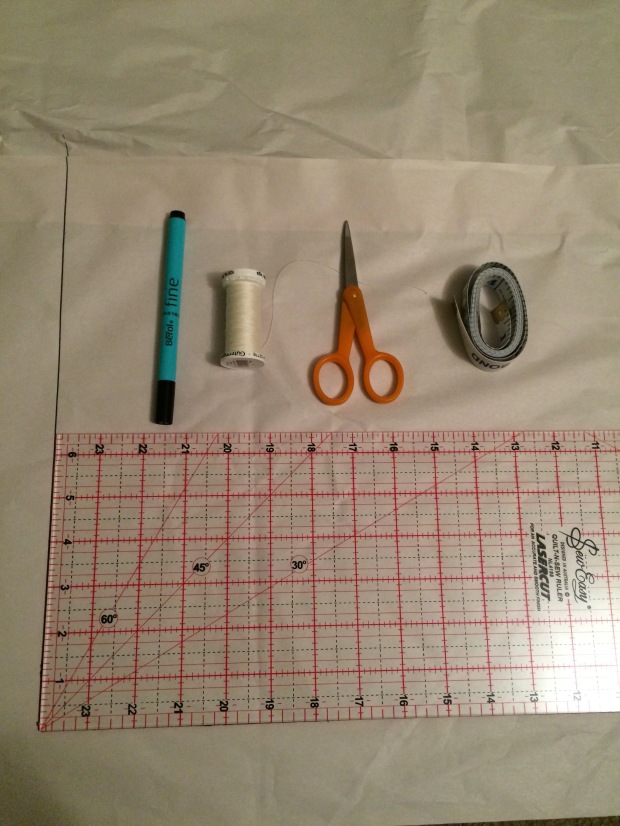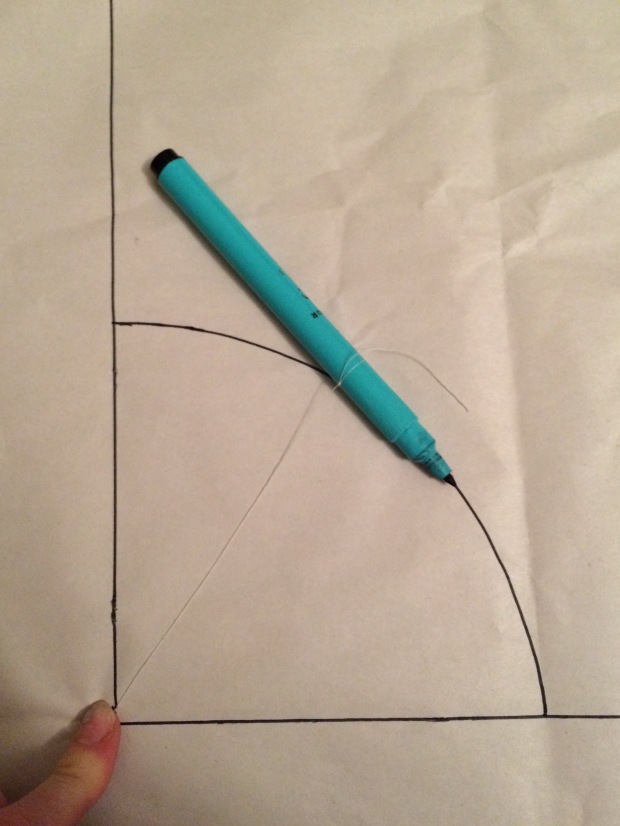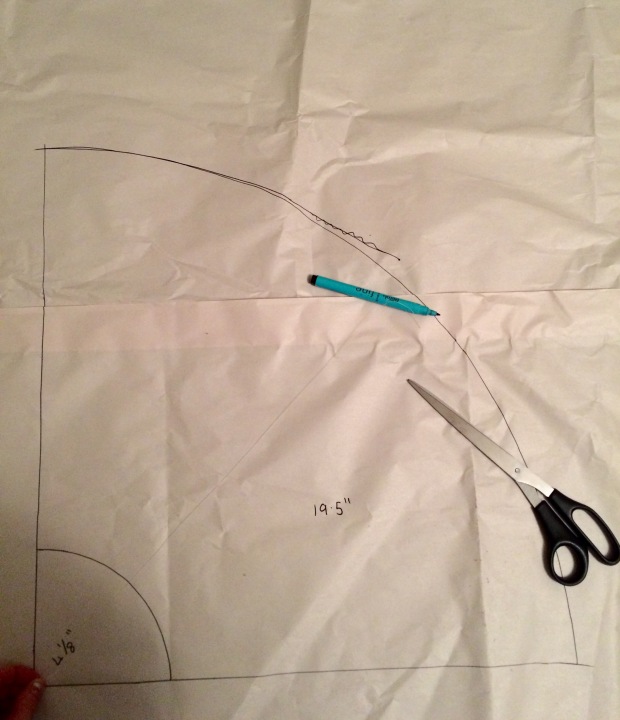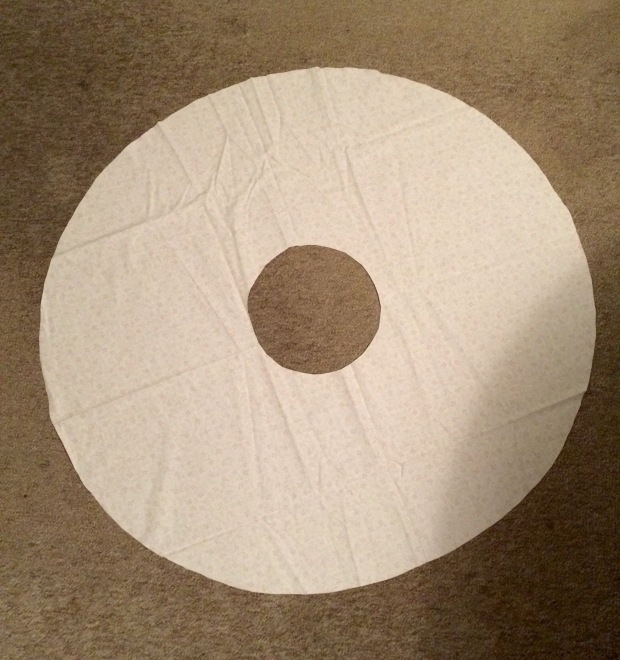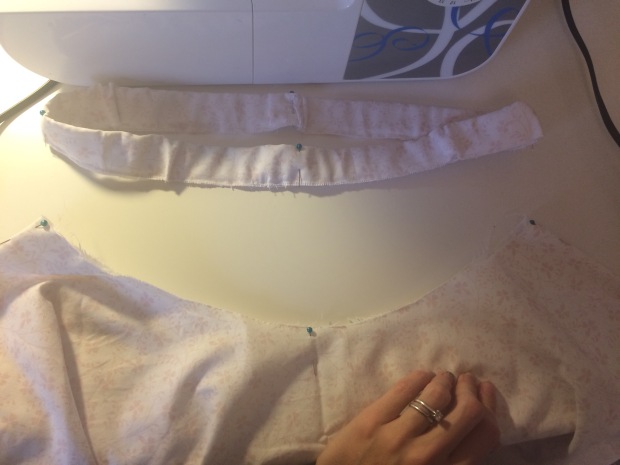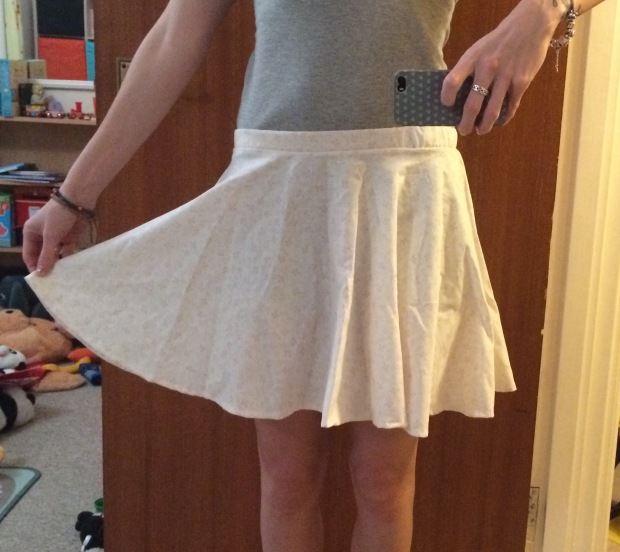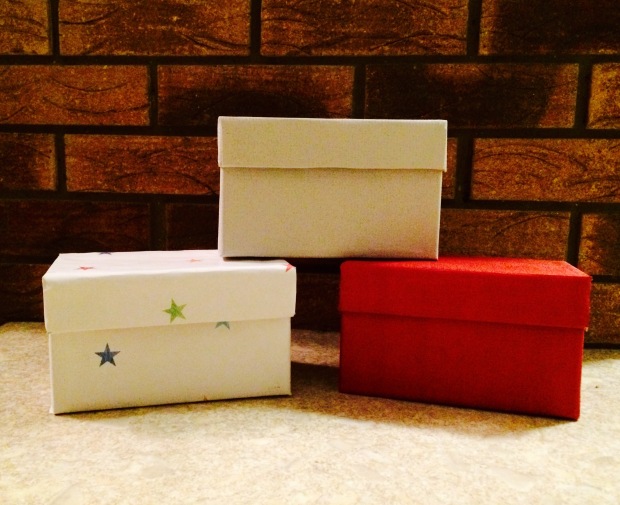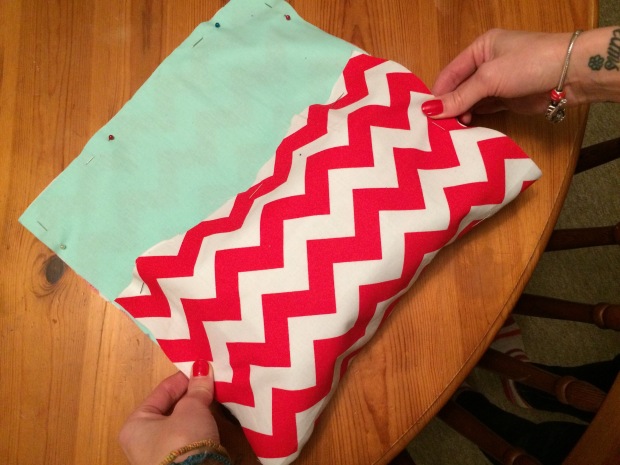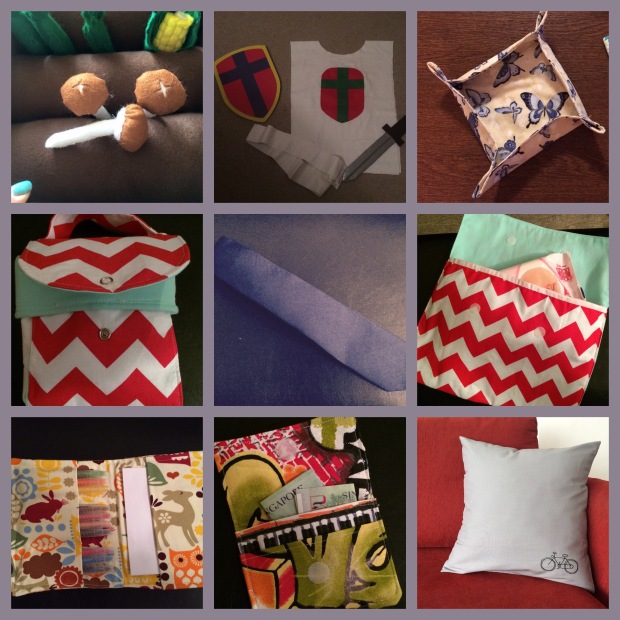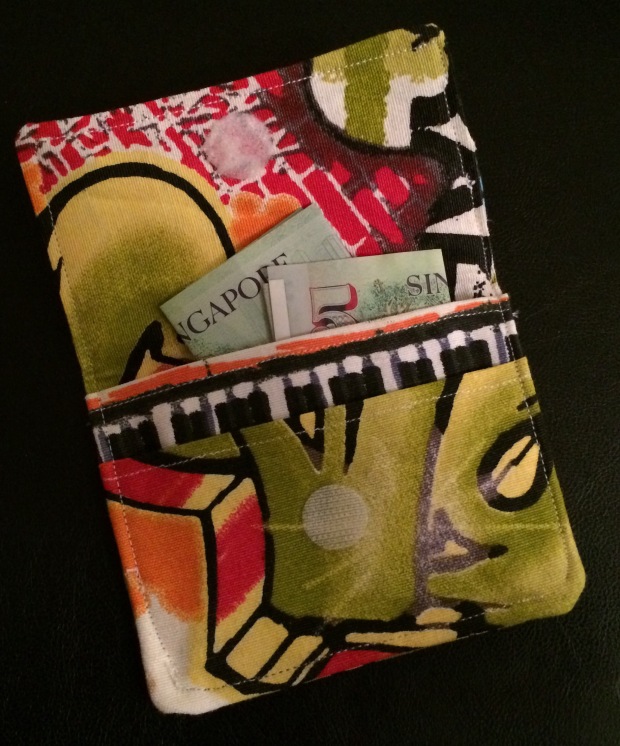After the big clothes cull of 2015 from mine and my husbands wardrobes I had lots of things to re-use and give a new life!
I’m returning to work next week after a lovely 9 months of maternity leave so I decided to make myself a lunch bag.
To make.
I used one pair of jeans for this.
1. Cut off one leg so that you have as much material as possible. Just below the crotch. Cut up one of the seams and open out the material. If you have pinking shears use them as the denim frays.

2. Measure out a rectangle 25 inches including 2 inch for hemming both short ends. Cut out.
3. On one short side fold over a quarter inch, press, and another quarter and pin. Top stitch along using a corresponding colour thread.
4. To make the loop for the button or toggle measure out a piece of material 1 X 5 inches.
5. Fold the strip in half, press for the centre line and open. Fold the two edges into the middle, press. Fold the two edges into the middle, press and pin.
Sew along the long side as close to the open side as you can. It’s quite fiddly! (You could always cut a hair elastic and use that instead!)

Cut to just under 3inches. And it’s ready. (It’s easier to stitch if its longer first)
6. Fold over a quarter inch, and another for the hem as before. Press and pin. Fold your rectangle and measure where the centre is. Place your loop either side of the line under the folded hem. 
7. Sew along the line. There is a lot of thick fabric here so go slowly.
8. Fold the loop upwards and pin. Sew over it again. My machine wasn’t up for this much fabric so I did it by hand.

9. Cut the other leg and open as before. For the sides of the bag I used the inside denim on the outside for a bit of variety.
10. Cut two strips 25″ by 2 and a half” for the side panels. 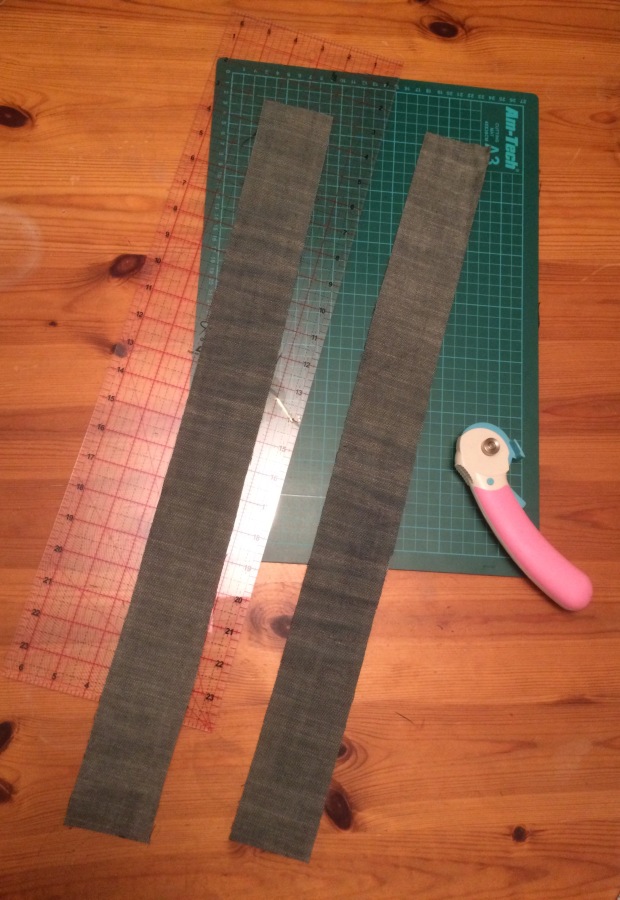
11. Fold up each short end a quarter of an inch, press, then another quarter, press and pin. Check they measure up alongside the other part. Adjust hems if a little bit short. Top stitch all 4 ends. I’m using the inside of the jeans as the outside colour fabric on the bag, so remember to fold right side down! 
12. Decide if you want the inside colour of the outside denim for your side pannels. I’ve chosen the inside, so lay your fabric strips like this, lining up the edges and pinning as you go. 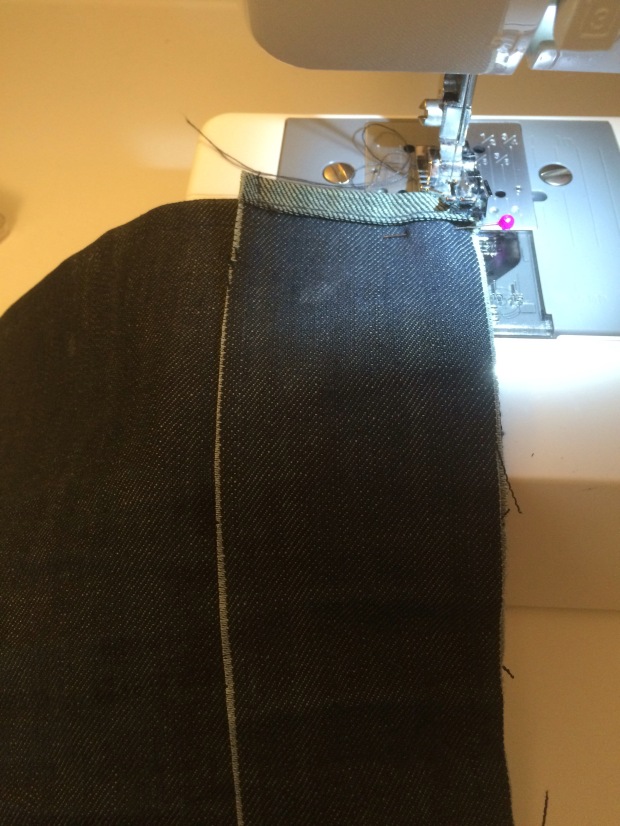
13. Zig zag stitch along the edge of both sides to help stop fraying on the inside of the bag. 
14. Cut off any loose threads.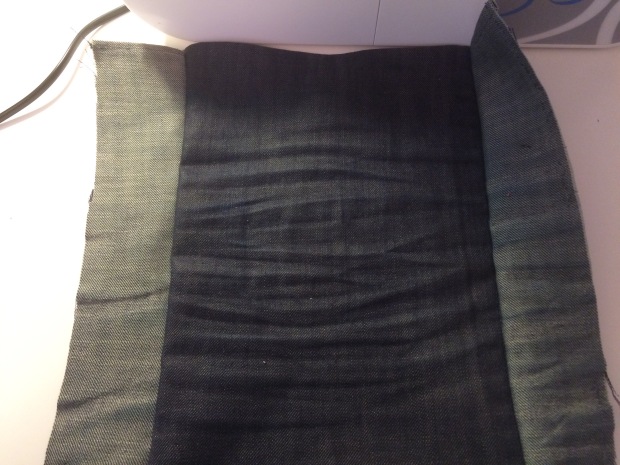
15. Fold in half, right sides together and pin. Sew with a zig zag stitch on both sides.

16. To make the boxed corners place your hand inside the bag and open out one corner.
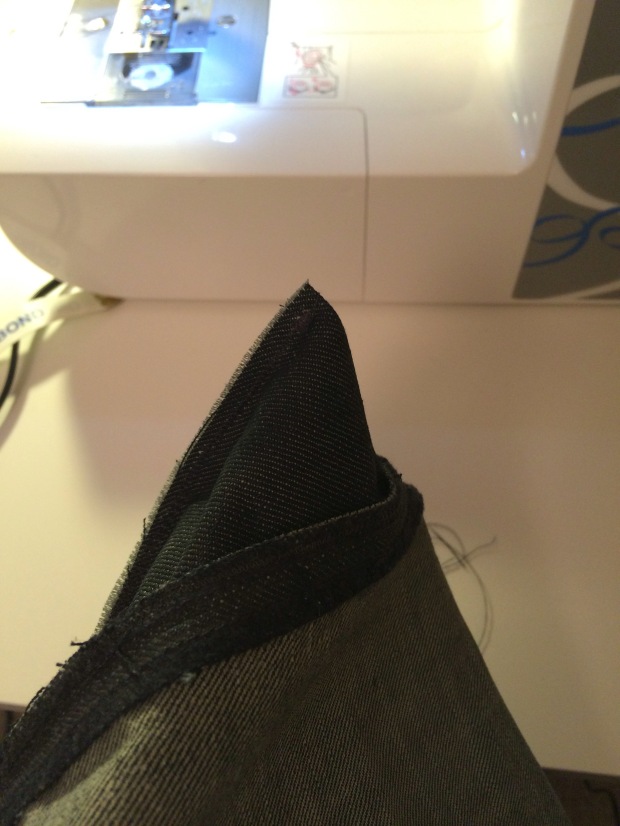
17. Line up the side seam with the centre line of the bottom of the bag and flattern to make a triangle. Measure to desired length. This will be how large you want the bottom of your bag to be. Mine ended up being 10cm instead of the two inches pictured.
18. Pin along the line, repeat for the other side. Carefully turn right side out and check you are happy with your bag.
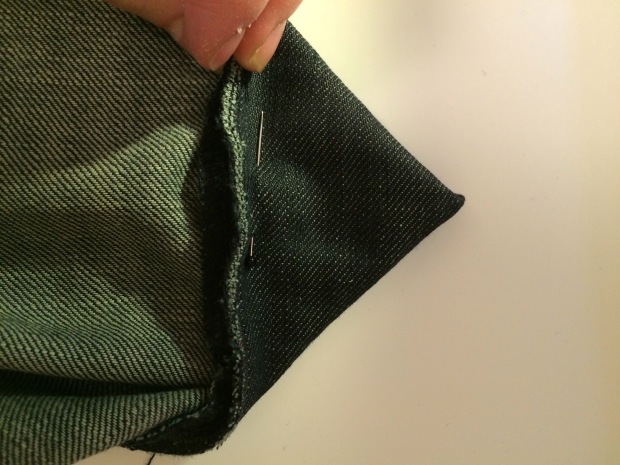
19. Sew along the line with a straight stitch, I used a zipper foot to get close to the bulk of fabric. Turn right side out out and check you are happy. Cut the exces fabric off both sides and your boxed corners are done!

20. Turn the bag right side out, fold down the top and mark where you would like your toggle/ button to go and hand sew onto the front of the bag. 
Done!
I added a strip of cardboard the size of the bottom of the bag to make it sturdy.
I really enjoyed working with the denim. I did find it slid around a bit more than other fabric so you have to keep a tight guide on it.
As I nearly finished I realised I had some needles to use when stitching denim! Oops, can use them for my next jeans re cycle.
Box corner: This is a great little link that demonstrates three ways to make a box corner.






















